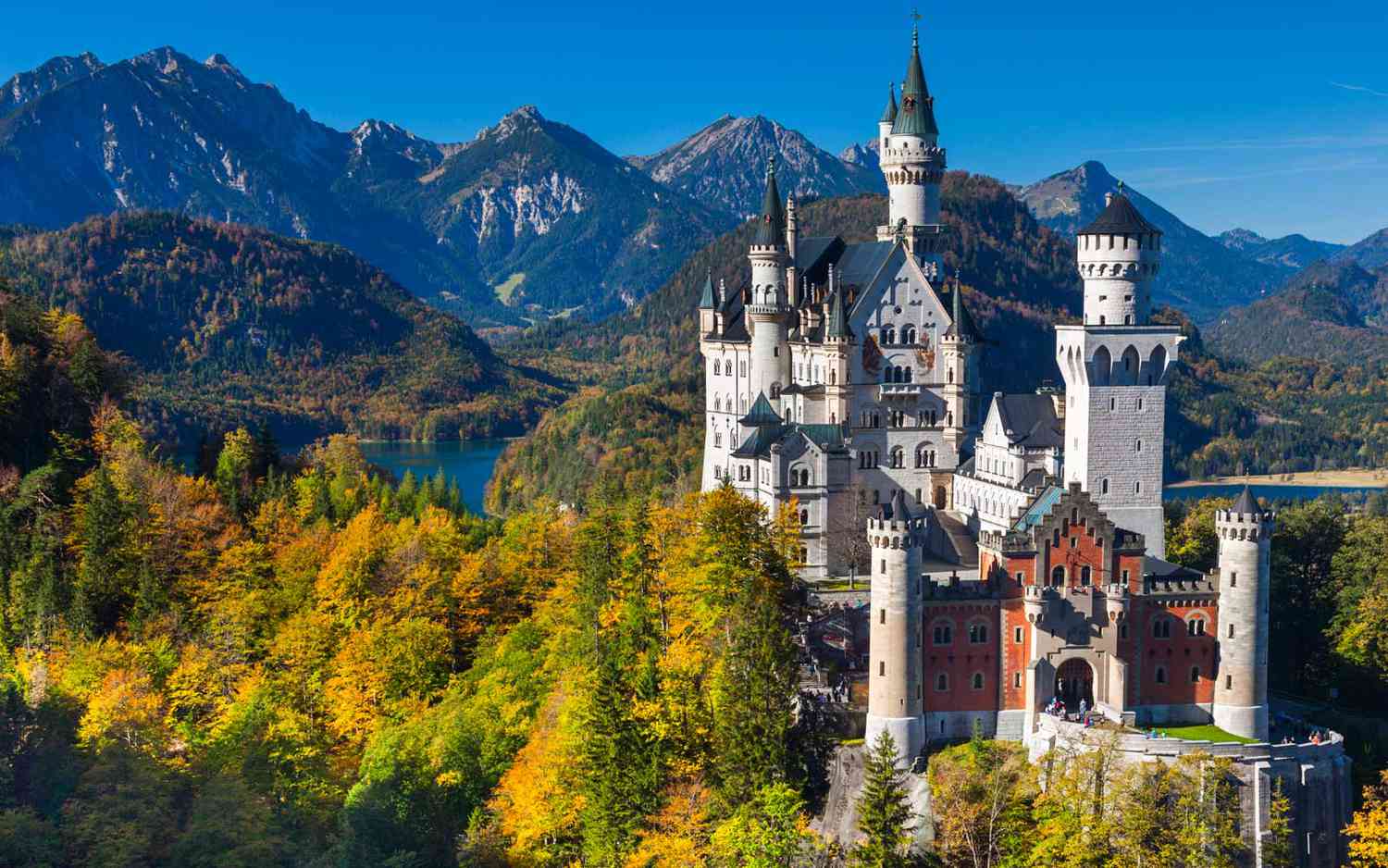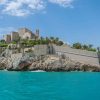Neuschwanstein Castle
Neuschwanstein Castle is one of the most iconic and picturesque castles in Europe. It has captivated countless visitors’ imaginations. The fairy-tale appearance and breathtaking surroundings enchant all who see it. Situated in the Bavarian Alps, this 19th-century Romanesque Revival palace stands out. It is renowned for its intricate architectural details. Its association with King Ludwig II of Bavaria is well known. He commissioned its construction. The castle’s striking towers and spires impress visitors. Lush forests and rugged mountains surround them. This makes it a must-visit destination. Anyone interested in European history and architecture should visit.
Can’t wait to visit the castle? Book your Neuschwanstein Castle tour online.
Location of Neuschwanstein Castle
Neuschwanstein Castle is located in the southwest of Bavaria, Germany, near the town of Füssen. Perched atop a rugged hill, it overlooks the Hohenschwangau Valley and the picturesque Alpsee Lake. The castle’s location was selected for its strategic and aesthetic advantages. It provides both security and a stunning panoramic view of the surrounding landscape. The region is accessible by various modes of transportation, including trains, buses, and cars, making it a convenient yet enchanting getaway for tourists from all over the world.

History of Neuschwanstein Castle
The history of Neuschwanstein Castle intertwines with the life of King Ludwig II, the “Fairy-tale King.” Initially, construction began in 1869. The castle was intended to serve as a private retreat for the reclusive king. Moreover, Ludwig sought to escape the pressures of public life. Inspired by Richard Wagner’s operas and medieval legends, Ludwig envisioned a castle. It would embody the romantic ideals of chivalry and grandeur.
The theatrical set designer Christian Jank oversaw the castle’s design. Eduard Riedel and later Georg von Dollmann executed the architectural plans. Despite its medieval appearance, Neuschwanstein Castle incorporated many modern amenities of the time. These included running water, flush toilets, and a central heating system. King Ludwig II’s obsession with perfection extended the construction process far beyond the original schedule. The castle remained unfinished during his lifetime.
In 1886, under mysterious circumstances, authorities declared Ludwig II unfit to rule and subsequently deposed him. He died shortly afterward, and weeks later, they opened his unfinished dream castle to the public. Since then, Neuschwanstein Castle has become one of the most visited castles in Europe, attracting millions of tourists each year.

Current Status
Today, Neuschwanstein Castle stands as a testament to King Ludwig II’s vision and artistic sensibilities. Furthermore, the Bavarian Palace Department manages it, and it remains one of the most popular tourist attractions in Germany. Its architectural beauty, along with the stories and legends surrounding its creation, draws visitors. Guided tours are available, offering insights into the history, design, and cultural significance of the castle.
The interior of Neuschwanstein Castle is as impressive as its exterior, with opulently decorated rooms and halls that reflect Ludwig’s fascination with medieval knights and chivalric tales. A magnificent chandelier and intricate mosaics adorn the Throne Room, while murals depicting scenes from Wagner’s operas decorate the Singer’s Hall. Despite the passage of time, meticulous preservation and restoration have ensured that future generations can appreciate the castle’s splendor.
Neuschwanstein Castle offers historical and architectural appeal and stands surrounded by natural beauty. The nearby Marienbrücke (Mary’s Bridge) offers a stunning view of the castle and the Pöllat Gorge, making it a popular spot for photography. The surrounding area also features numerous hiking trails, allowing visitors to explore the Bavarian Alps and experience the serene landscapes that inspired King Ludwig II.
Neuschwanstein Castle continues to be a symbol of romanticism and fantasy, enchanting visitors with its dreamlike appearance and rich history. Whether you are an architecture enthusiast, a history buff, or simply a lover of fairy tales, a visit to Neuschwanstein Castle promises to be a memorable and inspiring experience.
Admission
Community features
Castle features
Video
Location
Official website
Featured listings














